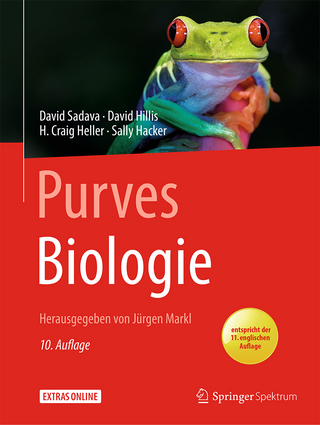
Contemporary Accounts in Drug Discovery and Development
John Wiley & Sons Inc (Verlag)
978-1-119-62771-5 (ISBN)
Drug discovery is a lengthy and complex process that typically involves identifying an unmet medical need, determining a biological target, chemical library screening to identify a lead, chemical optimization, preclinical studies and clinical trials. This process often takes many years to complete, and relies on practitioners’ knowledge of chemistry and biology, but also—and perhaps more importantly—on experience. Improving the success rate in discovery and development through a thorough knowledge of drug discovery principles and advances in technology is critical for advancement in the field.
Contemporary Accounts in Drug Discovery and Development provides drug discovery scientists with the knowledge they need to quickly gain mastery of the drug discovery process. A thorough accounting is given for each drug covered within the book, as the authors provide pharmacology, drug metabolism, biology, drug development, and clinical studies for every case, with modern drug discovery principles and technologies incorporated throughout.
Contemporary Accounts in Drug Discovery and Development readers will also find
Case histories used as an engaging way of learning about the drug discovery/development process
Detailed biological rational and background information, drug design principles, SAR development, ADMET considerations, and clinical studies
The full history of individual marketed small molecule drugs
Coverage of drug candidates that have passed Phase I clinical trials with different modalities, such as antibody drug conjugates (ADC), proteolysis-targeting chimera (PROTAC), and peptide drugs
The application of new technologies in drug discovery such as DNA-encoded libraries (DEL), positron emission tomography (PET), and physics-based computational modeling employing free energy perturbation (FEP)
Contemporary Accounts in Drug Discovery and Development is a helpful tool for medicinal chemists, organic chemists, pharmacologists, and other scientists in drug research and process development. It may be considered essential reading for graduate courses in drug discovery, medicinal chemistry, drug synthesis, pharmaceutical science, and pharmacology. It is also a useful resource for pharmaceutical industry labs, as well as for libraries.
Xianhai Huang, PhD, Executive Director and Head of Discovery Chemistry at InventisBio Co., Ltd. Robert G. Aslanian, PhD, Associate Professor of Chemistry and Chair of the Department at New Jersey City University. Wayne H. Tang, PhD, Executive Director and co-Head of Medicinal Chemistry at Schrödinger Inc.
PREFACE
CONTRIBUTORS
CHAPTER 1 CURRENT DRUG DISCOVERY: GREAT CHALLENGES AND GREAT OPPORTUNITY (AN INTRODUCTION TO CONTEMPORARY ACCOUNTS IN DRUG DISCOVERY AND DEVELOPMENT)
Jeffrey J. Hale
CHAPTER 2 ADVANCED COMPUTATIONAL MODELING ACCELERATING SMALL-MOLECULE DRUG DISCOVERY: A GROWING TRACK RECORD OF SUCCESS
Robert Abel
2.1 Introduction
2.2 Essential Techniques
2.2.1 Target Validation and Feasibility Assessment
2.2.2 Hit Discovery
2.2.3 Hit-to-lead and Lead Optimization
2.3 Illustrative Applications
2.3.1 Modeling Support of Target Validation, Feasibility Assessment, and Hit Discovery for Acetyl-CoA Carboxylase (ACC)
2.3.2 Optimizing Selectivity in Lead Optimization for Tyrosine Kinase 2
2.3.3 Discovery of Novel Allosteric Covalent Inhibitors of KRASG12C
2.3.4 Supporting Hit to Lead Exploration for a Series of Phosphodiesterase 2A (PDE2A) Inhibitors
2.4 Conclusion and Future Outlook
References
CHAPTER 3 DISCOVERY AND DEVELOPMENT OF THE SOLUBLE GUANYLATE CYCLASE (sGC) STIMULATOR VERICIGUAT FOR THE TREATMENT OF CHRONIC HEART FAILURE
Markus Follmann, Corina Becker, Lothar Roessig, Peter Sandner, and Johannes-Peter Stasch
3.1 Introduction
3.2 sGC Stimulators as Treatment Option for Heart Failure
3.2.1 Persistent High Medical Need in High-risk Patients with Chronic HF
3.3 Medicinal Chemistry Program
3.4 Synthesis Routes towards Vericiguat
3.4.1 Medicinal Chemistry Route to Vericiguat
3.4.2 Development Chemistry Route to Vericiguat
3.5 Preclinical Studies
3.5.1 In Vitro Effects on Recombinant sGC and sGC Overexpressing Cells
3.5.2 Ex Vivo Effects on Isolated Blood Vessels and Hearts
3.5.3 In Vivo Effects in a Disease Model with Cardiovascular Disease and Heart- and Kidney Failure
3.6 Clinical Studies
3.6.1 Safety, PD, PK and PK/PD in Healthy Volunteers
3.6.2 Clinical Pharmacokinetics
3.6.3 Pharmacodynamic Interactions
3.7 Summary
References
CHAPTER 4 FINDING CURES FOR ALZHEMIER’S DISEASE: FROM GAMMA SECRETASE INHIBITORS TO GAMMA SECRETASE MODULATORS AND BETA SECRETASE INHIBITORS
Xianhai Huang, Robert Aslanian
4.1 Introduction
4.1.1 Alzheimer’s Disease
4.1.2 Alzheimer’s Disease and Amyloid Beta Theory
4.2 Gamma Secretase Inhibitors Drug Discovery and Development
4.2.1 Gamma Secretase Inhibitors Rationale
4.2.2 The Discovery of Gamma Secretase Inhibitors SCH 900229
4.2.2.1 The Discovery of 2,6-Disubstituted Piperidine Sulfonamide Gamma Secretase Inhibitors
4.2.2.2 The Discovery of Tricyclic Sulfones GSIs and a Preclinical Candidate SCH 900229
4.2.3 Gamma Secretase Inhibitors Summary
4.3 Gamma Secretase Modulator Drug Discovery and Development
4.3.1 Gamma Secretase Modulator Rationale
4.3.2 The Discovery of Oxadiazoline and Oxadiazine Gamma Secretase Modulators
4.3.2.1 The Pyrazolopyridine Series of Gamma Secretase Modulators
4.3.2.2 The Discovery of Oxadiazoline, Oxadiazine, and Oxadiazepine Gamma Secretase Modulators
4.3.2.3 Profiles of Gamma Secretase Modulator Preclinical Candidates (PCC)
4.3.3 On-going Gamma Secretase Modulators Discovery
4.4 Beta Secretase Inhibitors Overview
4.4.1 Beta Secretase Inhibitors Rationale
4.4.2 Brief Summary of Verubecestat (MK-8931) Discovery and Clinical Development
4.4.3 BACE1 Inhibitors Summary
4.5 Summary
Acknowledgement
References
CHAPTER 5 DISCOVERY OF NOVEL ANTIVIRAL AGENTS ENABLED BY STRUCTURAL BIOLOGY, COMPACT MODULES AND PHENOTYPIC SCREENING
Wei Zhu, Song Yang, Hongying Yun, and Hong C. Shen
5.1 Introduction
5.2 Discovery and Early Development of Novel Core Protein Assembly Modulators for the Treatment of chronic HBV infection
5.2.1 Introduction
5.2.2 Lead Generation and Optimization
5.2.3 Profile of Compound 3
5.2.4 Approaches to Address CYP Induction Liability
5.2.5 Conclusion
5.3 RG7834: The First-in-class Selective and Orally Bioavailable Small Molecule HBV Expression Inhibitor with a Novel Mode of Action
5.3.1 Introduction
5.3.2 The Discovery of RG7834
5.3.2.1 Lead Generation
5.3.2.2 Lead Optimization
5.3.2.3 Profile of RG7834
5.3.2.4 Target Identification
5.3.3 Conclusion
5.4 Ziresovir: the Discovery of a Highly Potent, Selective and Orally Bioavailable RSV Fusion Protein Inhibitor
5.4.1 Introduction
5.4.2 The Discovery of Ziresovir (RO-0529 OR ARK0529)
5.4.2.1 Lead Generation
5.4.2.2 Lead Optimization
5.4.2.3 Profile of Ziresovir
5.4.2.4 Mode of Action of Ziresovir
5.4.3 Clinical Studies of Ziresovir
5.5 Conclusion
References
CHAPTER 6 DISCOVERY OF SUBTYPE SELECTIVE AGONISTS OF THE GROUP II METABOTROPIC GLUTAMATE RECEPTORS
Junliang Hao
6.1 Background
6.1.1 The Dopamine and Glutamate Hypotheses of Schizophrenia
6.1.2 The Ionotropic and Metabotropic Glutamate Receptors
6.1.3 Orthosteric Agonists of the Group II mGlu Receptors
6.1.4 Prodrug Approach to Improve Oral Bioavailability
6.1.5 Clinical Studies of 6 in Schizophrenia (via its Prodrug 7)
6.1.6 Rationale for Subtype Selective Agonists of the Group II mGlu Receptors
6.2 Discovery of Subtype Selective Agonist LY2812223 of the mGlu2 Receptor
6.2.1 Barriers to Achieve High Subtype Selectivity at the Orthosteric Site
6.2.2 Discovery of Subtype Selective Agonists for the mGlu2 Receptor
6.2.3 Additional In Vitro Characterization of 11
6.2.4 Preclinical Pharmacokinetic Profile of 11
6.2.5 Preclinical Animal Model of Psychosis
6.3 Discovery of Subtype Selective Agonist LY2794193 of the mGlu3 Receptor
6.3.1 Discovery of Subtype Selective Agonists for the mGlu3 Receptor
6.3.2 Additional In Vitro Characterization of 19
6.3.3 Preclinical Pharmacokinetic Profile of 19
6.3.4 Preclinical Animal Model
6.4 Structural Basis for Subtype Selectivity
6.4.1 Crystal Structures of hmGlu2 and hmGlu3 ATDs in Complex with 3 and L-Glu
6.4.2 Crystal Structures of hmGlu2 and hmGlu3 ATDs in Complex with 11 and 19
6.4.3 Structural Basis for the mGlu2 Subtype Selectivity of 11 and the mGlu3 Subtype Selectivity of 19
6.5 Divergent Synthesis of 11 and 19
6.6 Clinical Experience with mGlu2 Selective Agonist 11 (via Its Prodrug 12)
6.6.1 Human Plasma and CSF PK Profiles of 11
6.6.2 Biomarker
6.6.3 Safety
6.7 Conclusion
References
CHAPTER 7 DISCOVERY OF TASELISIB (GDC-0032): AN INHIBITOR OF PI3K WITH SELECTIVITY OVER PI3K
Timothy P. Heffron, Laurent Salphati, and Steven T. Staben
7.1 Introduction
7.2 Hit to Lead Efforts
7.3 Final Lead Optimization Leading to Discovery of Taselisib: ADME Optimization and Achieving Selective Inhibition of PI3K over PI3K
7.4 Preclinical in vivo Pharmacology of Taselisib
7.5 Prediction and Clinical Assessment of Taselisib Human Pharmacokinetics
7.6 Conclusion
References
CHAPTER 8 DRUG DISCOVERY WITH DNA-ENCODED LIBRARY TECHNOLOGY: INHIBITOR OF SOLUBLE EPOXIDE HYDROLASE TO CLINICAL CANDIDATE
Yun Ding, Sarah K. Scott
8.1 Background of DNA-encode Library Technology
8.1.1 Development of Encoding Strategies
8.1.2 The Encoding Strategy at GSK
8.1.3 Development of DNA-Compatible Chemistry
8.1.4 Methods for in vitro Selection of DNA-encoded Libraries
8.1.5 Decoding, Data Analysis and Off-DNA Hit Follow up
8.2 Application of DNA-encoded Library Technology in Small Molecule Drug Discovery
8.3 Discovery of sEH Inhibitors via DNA-encoded Library Technology
8.3.1 DEL Libraries for sEH Screening
8.3.2 sEH ELT Selection
8.3.3 ELT Hit Confirmation, SAR and Hit-to-lead Optimization
8.3.4 Lead Optimization, Preclinical and Clinical Development: GSK2256294 as a Clinical Asset
8.3.5 Clinical trials with GSK2256294
8.4 Summary
References
CHAPTER 9 DISCOVERY OF HTL26119: FAMILY B GPCR STRUCTURE-BASED DRUG DESIGN IS NOW A REALITY
Andrea Bortolato, Jonathan S. Mason
9.1 Introduction
9.2 G Protein-Coupled Receptor Structure Based Drug Discovery
9.3 The Beginning of the Family B GPCR Structural Biology Revolution
9.4 Lessons Learned from the Corticotropin-Releasing Factor Receptor Type 1 Crystal Structure
9.5 Structural Understanding of Glucagon and GLP1 Receptor Activation
9.6 Hyperinsulinaemic Hypoglycaemia
9.7 GLP1 Receptor Negative Allosteric Modulator Lead Identification
9.8 GLP1 Receptor Negative Allosteric Modulator Lead Optimization
9.9 Conclusion
References
CHAPTER 10 DISCOVERY AND POTENTIAL APPLICATION OF [11C]MK-6884: A POSITRON EMISSION TOMOGRAPHY (PET) IMAGING AGENT FOR THE STUDY OF M4 MUSCARINIC RECEPTOR POSITIVE ALLOSTERIC MODULATORS (PAMs) IN NEURODEGENERATIVE DISEASES
Ling Tong, Wenping Li
10.1 Introduction
10.1.1 Positron Emission Tomography
10.1.2 Muscarinic Acetylcholine Receptor 4 (M4) Positive Allosteric Modulator
10.2 Discovery of a Selective PET Tracer for M4 PAM
10.2.1 Criteria for a PET Tracer
10.2.2 PET Feasibility Study
10.2.3 PET Specific Signal is Driven by an Increase in Binding Affinity
10.2.4 The Implication of Lipophilicity and Free Fraction on in vivo BPND
10.2.5 Fluorine-18 Labeling Opportunity
10.3. A PET Tracer That Images M4 in Rat
10.4. Characterization of [11C]10 as a PET Tracer Preclinical Candidate (PCC) for Human Use
10.5 Development of [11C]MK-6884
Acknowledgement
References
CHAPTER 11 TARGETED PROTEIN DEGRADATION BY PROTEOLYSIS TARGETING CHIMERAS (PROTACs): A REVOLUTION IN SMALL MOLECULE DRUG DISCOVERY
Wu Du
11.1 The Concept of Targeted Protein Degradation
11.1.1 Introduction
11.1.2 The Ubiquitin-Proteasome System
11.1.3 Targeted Protein Degradation by Proteolysis Targeting Chimeras (PROTACs)
11.2 The Advances of with PROTACs
11.2.1 Proof of Concept and Early Peptide Based PROTACs
11.2.2 Small Molecule Based PROTACs: the Discovery of VHL and CRBN E3 Ligands
11.2.3 Ligands for E3 Ligase
11.2.4 Mechanistic Considerations: the Ternary Complex and the Kinetics
11.2.5 Androgen Receptor (AR) PROTACs: a Case Study
11.2.6 Novel PROTACs: Self-assembled Click-formed PROTACs (CLIPTACs), Photo-chemically Controlled PROTACs (PHOTACs), Antibody-PROTAC Conjugates
11.2.7 Examples of Small Molecule Based PROTACs
11.3 Pharmacokinetics and Oral Absorption Challenge
11.4 PROTACs in Clinical Development
11.4.1 Androgen Receptor Targeting PROTAC ARV-110
11.4.2 Estrogen Receptor Targeting PROTAC ARV-471
11.5 Challenges and Perspectives
Acknowledgments
References
CHAPTER 12 ENTREPRENEURIAL DRUG HUNTER: MACROCYCLIC PEPTIDE MODALITIES
Tomi Sawyer
12.1 Introduction
12.2 Macrocyclic Peptide Modalities in Retrospect
12.3 Receptor and Extracellularly Targeted Macrocyclic Peptides
12.4 Intracellular Protein-protein Interaction Targeted Macrocyclic Peptides
12.5 Macrocyclic Peptide Advancement to Clinical Development and FDA Approval
12.6 Macrocyclic Peptide Drug Discovery Paradigm and Future Directions
Acknowledgement
References
CHAPTER 13 APPLICATION OF PYRROLOBENZODIAZEPINE (PBD) IN ANTIBODY DRUG CONJUGATES
Ning Zou, Amy Han
13.1 Introduction
13.2 Antibody drug conjugating with PBD payloads
13.2.1 SG-3199 (payload), SG-3249 (linker-payload), and SG-3199 Based ADCs
13.2.1.1 ADCT-301
13.2.1.2 ADCT-401
13.2.1.3 ADCT-402
13.2.1.4 ADCT-502
13.2.1.5 ADCT-602
13.2.1.6 Rovalpituzumab Tesirine (Rova-T)
13.2.1.7 ADCT-601
13.2.1.8 MEDI2228
13.2.1.9 TR1801-ADC (MT-8633)
13.2.2 SGD-1882 (payload), SGD-1910 (linker-payload), and SGD-1882 Based ADCs
13.2.2.1 SGN-CD33A (Vadastuximab Talirine)
13.2.2.2 SGN-CD70A
13.2.2.3 SGN-CD19B
13.2.2.4 SGN-CD123A
13.2.2.5 SGN-CD352A
13.2.2.6 ABBV-176
13.2.2.7 ABBV-321
13.2.3 IGN Payloads-based ADCs
13.2.3.1 IMGN779
13.2.3.2 IMGN632
13.2.3.3 TAK-164
13.2.4. Other PBD-based Payload ADCS
13.2.4.1 PBD-MA
13.2.4.2 Pyrridinobenzodiazepines (PDDs)
13.2.4.3 Isoquinolidinobenzodiazepine Dimers (IQBs)
13.2.4.4 PBD-Duocarmycin Dimers
13.2.4.5 PBD Dimer with Thio-oxophosphane Moiety
13.3 Small Molecule Drug Conjugates with pro-PBD Payloads
13.3.1 N-Substituted 1,3-Oxazolidine pro-PBD
13.3.2 Oxime Ether pro-PBD
13.4 Discussion
13.5 Conclusion
References
CHAPTER 14 COMBINATION THERAPY CASE STUDIES IN ANTICANCER AND ANTI-INFECTIOUS DISEASE DRUG DISCOVERY AND DEVELOPMENT
Xianhai Huang, David Yu-Kai Chen
14.1. Introduction
14.1.1. Combination Therapy in Anticancer Drug Discovery and Development
14.1.2. Combination Therapy in Antibacterial Drug Discovery and Development
14.2. Case Study of Olaparib (Lynparza®) and Bevacizumab (Avastin®) Combination in the Treatment of Advanced Ovarian Cancer
14.2.1. Discovery and Development History of Olaparib and Bevacizumab in the Treatment of Ovarian Cancer
14.2.1.1 Discovery and Development History of Olaparib in the Treatment of Ovarian Cancer
14.2.1.2 Discovery and Development History of Bevacizumab in the Treatment of Ovarian Cancer
14.2.2. Rational Design of Olaparib and Bevacizumab Combination
14.2.3. Olaparib and Bevacizumab Combination in Clinical Studies
14.2.3.1. Phase I Clinical Studies of the Olaparib and Bevacizumab Combination
14.2.3.2. Phase II Clinical Studies of Olaparib and Bevacizumab Combination
14.2.3.3. Phase III Clinical Studies of Olaparib and Bevacizumab Combination
14.2.4. Summary of the Olaparib and Bevacuzimab Combination
14.3. Case Study of Ceftazidime and Avibactam Combination (Avycaz®) in the Treatment of Complicated Urinary Tract Infections (cUTIs) and Intra-Abdominal Infections (cIAIs)
14.3.1. Brief History of the Discovery of Ceftazidime and Avibactam and the Rational for the Combination of Ceftazidime and Avibactam in the Treatment of Complicated Urinary Tract Infections (cUTIs) and Intra-Abdominal Infections (cIAIs)
14.3.2. PK, Safety and Tolerability of Ceftazidime and Avibactam Combination in Phase I Human Clinical Trials
14.3.3. Clinical Efficacy of the Ceftazidime and Avibactam Combination
14.3.3.1. Ceftazidime and Avibactam Combination Phase II Clinical Trials
14.3.3.2. Ceftazidime and Avibactam Combination Phase III Clinical Trials
14.3.3.2.1 Ceftazidime and Avibactam Combination Phase III Clinical Trials in the Treatment of cUTI
14.3.3.2.2 Ceftazidime and Avibactam Combination Phase III Clinical Trials in the Treatment of cIAI
14.3.3.2.3 Ceftazidime and Avibactam Combination Phase III Clinical Trials in the Treatment of Nosocomial Pneumonia and Ventilator-Associated Pneumonia
14.3.3.2.4 Ceftazidime and Avibactam Combination Phase III Clinical Trials in the Treatment of Pediatric Patients with cUTI and cIAI
14.3.4. Summary of Ceftazidime and Avibactam Combination
14.4. Combination Therapy Future Perspectives
References
CHAPTER 15 ACCELERATING DRUG DISCOVERY AND DEVELOPMENT: TRANSLATIONAL MEDICINE IN COMBATING THE COVID19 PANDEMIC
Xianhai Huang, David Yu-Kai Chen, and Haifeng “Wayne” Tang
15.1. Introduction to Translational Medicine
15.2. From Bench to Bedside: Translating Basic Research into Desirable Clinical Outcomes for COVID-19 Treatments
15.2.1. The Importance of Diagnostic Biomarkers in Speeding up Testing to Contain the Spread of the COVID-19 Virus
15.2.1.1. The Polymerase Chain Reaction (PCR) Test
15.2.1.2. The Antigen Test
15.2.1.3. The Antibody (Serological) Test
15.2.2. The Discovery and Clinical Development of Remdesivir in the Era of the COVID-19 Pandemic
15.2.3. COVID-19 Virus Targeting Antibody Discovery and Development
15.2.4. Accelerated Vaccine Development for COVID-19 Prevention
15.3. From Bedside to Bench: Accelerating Drug Discovery and Development in Treating COVID-19
15.3.1. The Need for an Inhaled Formulation of Remdesivir
15.3.2. Overcoming Cytokine Storm in COVID-19 Treatment
15.4. Translational Medicine Summary
References
APPENDIX I MONOCLONAL ANTIBODY DRUG DISCOVERY AND DEVELOPMENT PARADIGM
APPENDIX II GLOSSARY
APPENDIX III ABBREVIATIONS
INDEX
| Erscheinungsdatum | 20.04.2022 |
|---|---|
| Verlagsort | New York |
| Sprache | englisch |
| Maße | 10 x 10 mm |
| Gewicht | 454 g |
| Themenwelt | Naturwissenschaften ► Biologie |
| Naturwissenschaften ► Chemie | |
| ISBN-10 | 1-119-62771-0 / 1119627710 |
| ISBN-13 | 978-1-119-62771-5 / 9781119627715 |
| Zustand | Neuware |
| Informationen gemäß Produktsicherheitsverordnung (GPSR) | |
| Haben Sie eine Frage zum Produkt? |
aus dem Bereich


